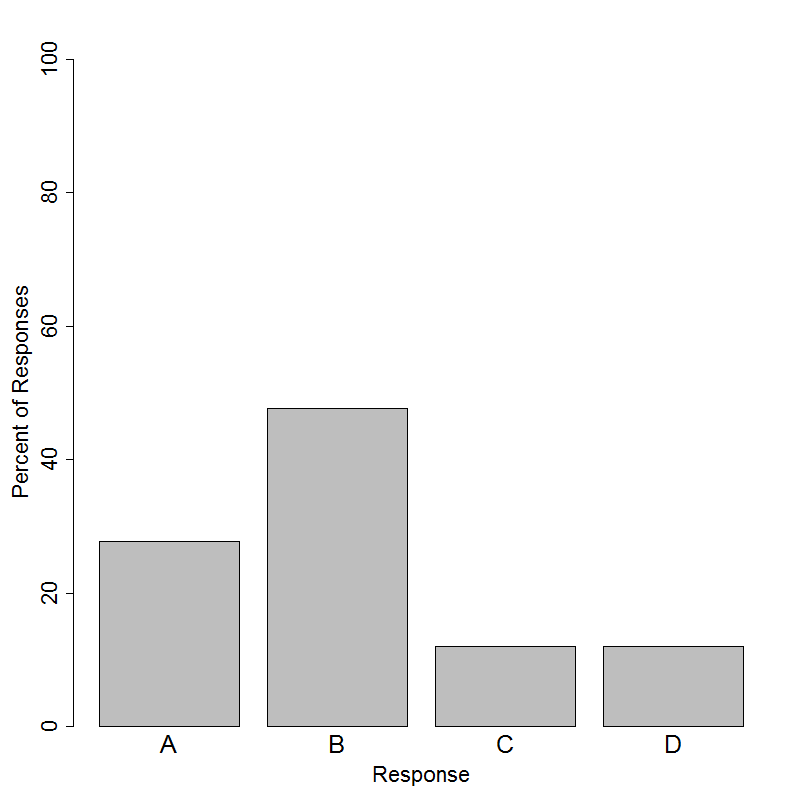A study was conducted to investigate whether washing with soap and water or using hand sanitizer removes more bacteria from a person's hands. Volunteers were recruited from a high school and randomly assigned to a group that washed their hands with soap and water or to a group that used hand sanitizer. When they were finished, each volunteer pressed his or her hands into specially prepared petri dishes. After several days, the number of bacteria colonies was counted on each petri dish. Which of the following statements best describes the random assignment in this study?
(A) The random assignment was important because it tends to create groups that are similar with respect to other variables that might affect bacteria growth.
(B) The random assignment was important so that these results could be applied to all high school students.
(C) Including random assignment was incorrect because students should be divided into the two groups based on their usual method of cleaning their hands.
(D) The random assignment was unnecessary because using volunteers makes the study worthless.





The correct answer to this question is Option (A). In experiments, random assignment is used to create groups that are similar with respect to other variables, which allows researchers to draw conclusions about cause-and-effect. If the subjects were not randomly assigned in this study, the two groups might be different with respect to some variable (e.g., age, gender, participation in certain extracurricular activities) that directly or indirectly affects the amount of bacteria on a person’s hands. Without random assignment, it would be impossible to tell if method of hand cleaning had caused one group to have less bacteria than the other or if the difference was due to some other, uncontrolled variable. Only 28% of students selected Option (A).
The most popular incorrect answer, Option (B), was selected by 48% of students. This answer demonstrates confusion between random selection and random assignment, which are distinct types of randomization with very different purposes. Whereas random assignment allows for conclusions about cause-and-effect, random selection allows for conclusions that can be applied to a larger population. Because these subjects were volunteers not a randomly selected sample, we cannot assume that these subjects are representative of all high school students, so it is inappropriate to apply the results of the study to the larger population of high school students. Option (D) also fails to recognize the different purposes of random selection and random assignment. This study uses volunteers instead of a randomly selected sample so the results should not be generalized to the whole population; however, the study is not worthless, because the experimental design with random assignment can be used to determine whether type of hand cleaning caused a reduction in bacteria among these volunteers.
Option (C) describes a study design in which subjects decide for themselves whether to use soap and water or hand sanitizer. The conclusions drawn from this kind of study would be limited because students who use soap and water may be different from students who use hand sanitizer in some other way that affects the amount of bacteria on their hands. Thus, it would be impossible to determine whether a particular method of cleaning their hands had caused a reduction in the amount of bacteria or if the results were due to pre-existing differences between the groups.